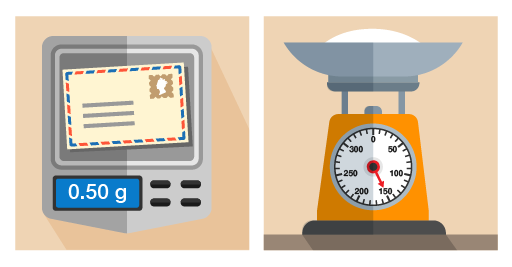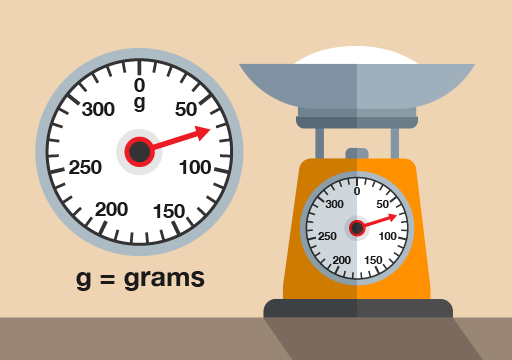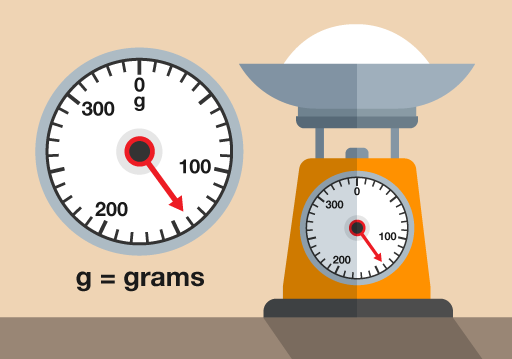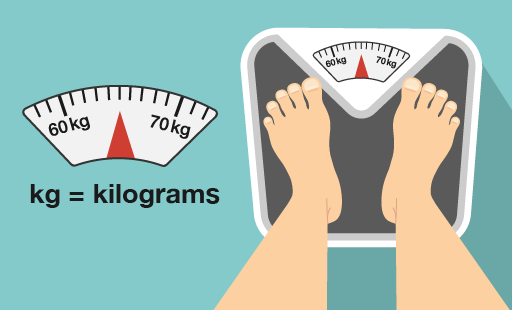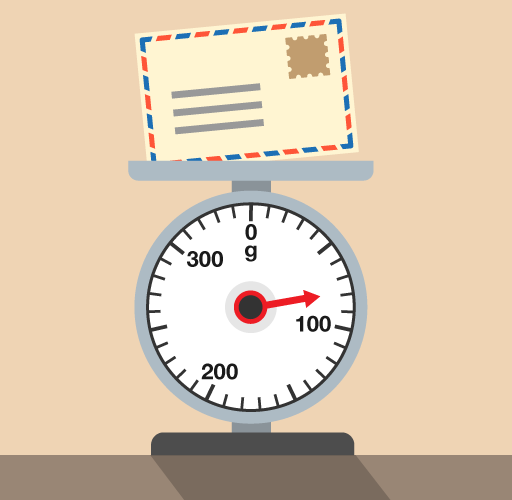3 Estimating, measuring and comparing weights
How much do you weigh?
You might have given your weight in kilograms (kg) or in pounds (lb), or pounds and stone (st). Kilograms are metric weights. Pounds and stones are imperial weights.
- 1,000 grams (g) = 1 kilogram (kg)
You should measure weight in metric units, but you might see the old imperial units used sometimes.
- 1 g is approximately the weight of a paperclip.
Many foods are sold by weight. For example:
- 1 kg of sugar (this is equivalent to about two and a quarter pounds)
- 500 g of rice (about one pound)
- 250 g of coffee (about half a pound)
- 100 g of chocolate (slightly less than a quarter of a pound)
- 30 g of crisps (about an ounce)
- 10 g of a spice (about a third of an ounce).
Heavier things are weighed in kilograms:
- 50 kg of sharp sand (about 110 pounds)
- 10 kg chicken food (about 20 pounds)
- 1 kg of nails (about two pounds).
Note that if you bought ten packets of rice, you would say you had bought 5 kg rather than 5,000 g.
Scales show you how much something weighs. Digital scales show the weight as a display of numbers. Other scales have a dial or line of numbers and you have to read the weight from this.
You’ll notice that on the right-hand set of scales in the picture above, the needle points to 150 g. If you use scales like this, you need to know the divisions marked on the scales. You might have to count the marks between numbers.
Example: Identifying weights on scales
What is the weight of the flour in these scales?
(Note that scales like this are calibrated to weigh only the flour inside the bowl – the weight on the scales is just the flour, not the flour and the bowl.)
Method
There are four marks between 50 g and 100 g, each representing another 10 g. So the marks represent 60 g, 70 g, 80 g and 90 g. The needle is level with the second mark, so the weight is 70 g.
Now try the following activity. Remember to check your answers once you have completed the questions.
Activity 6: Reading scales
- How many grams of sugar are on the scales in the picture below?
- What is this person’s weight in kilograms?
- How much does the letter weigh?
Answer
- There are nine marks between 100 g and 200 g, so each mark represents 10 g. The needle is at the fourth mark after 100g, so there is:
- 100 + 40 = 140 g of sugar
- The needle is halfway between 60 kg and 70 kg, so the person weighs 65 kg.
- There are nine marks between 0 g and 100 g, so there’s a mark at every 10 g. The needle is two marks before 100 g, so the letter weighs:
- 100 – 20 = 80 g

